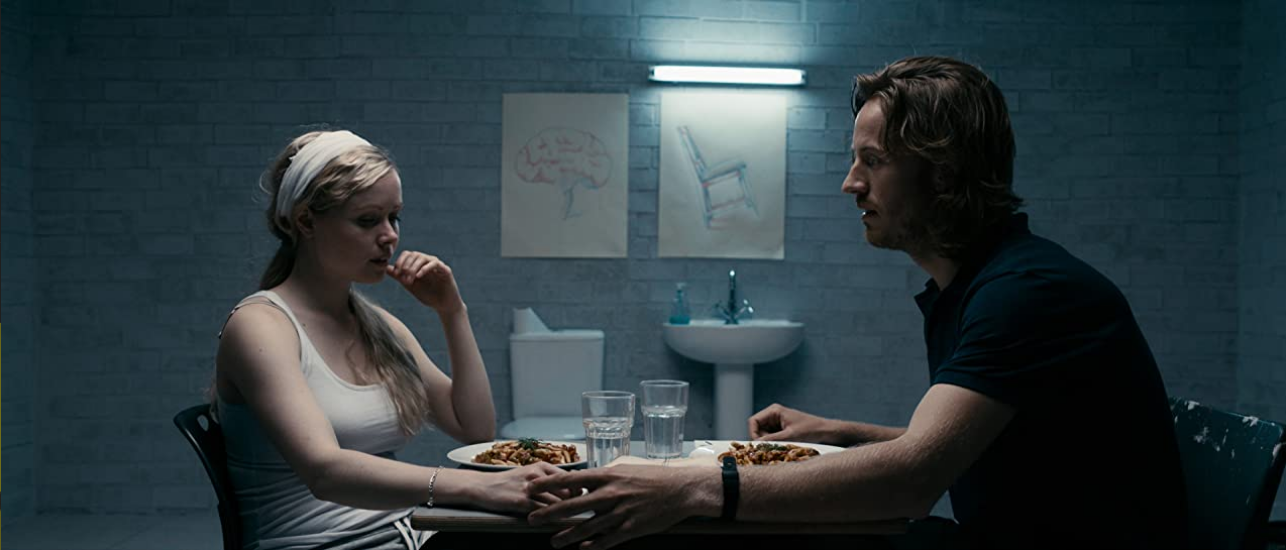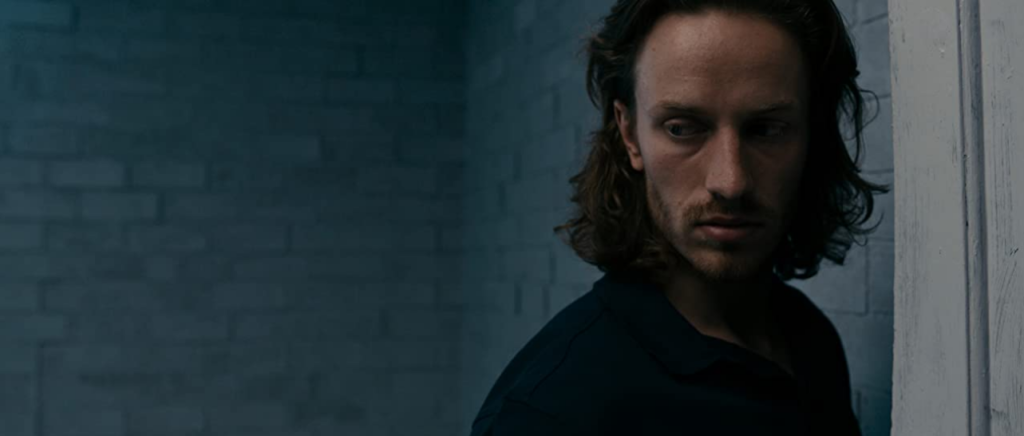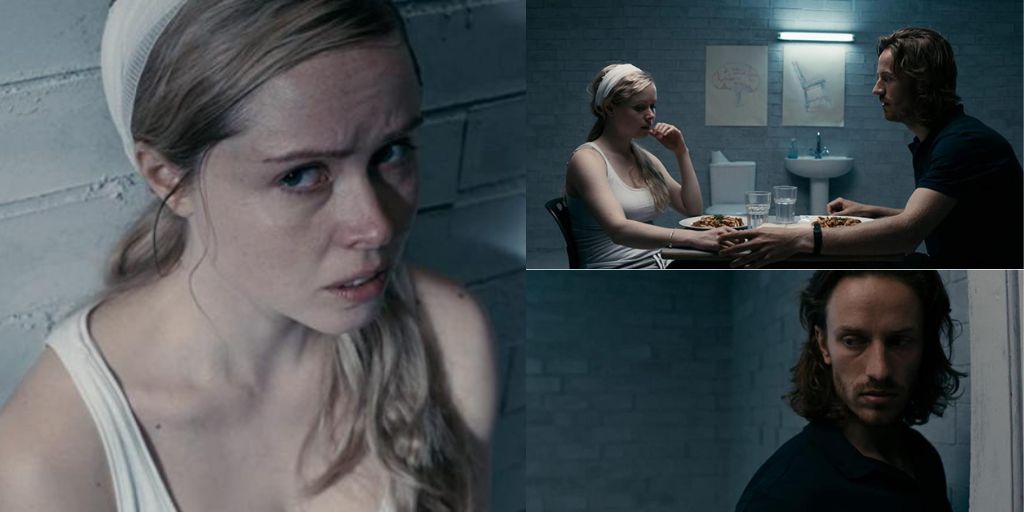In 2018, several excellent films left audiences speechless, but despite the majority of attention going to blockbusters, a few small indie films also made a significant impact. Among them was “Hippopotamus,” writer/director Edward Palmer’s frightening feature debut.
The idea behind “Hippopotamus” isn’t that complicated. Thomas has taken Ruby hostage and claims he won’t release her until she has developed feelings for him. However, this isn’t a film like “365 Days,” and romance won’t even cross your mind when the titles roll. Not only is Ruby’s abduction horrific, but she also experiences amnesia. The more her past is pieced together, the more horrible her current circumstances become.
Similar to other outstanding mind-bending works, “Hippopotamus” focuses more on the questions it poses than the responses it offers. By the end of the movie, you won’t know who or what to trust as it explores the relationship between Ruby and Thomas while playing with time and memory.
Even though “Hippopotamus” might merit a second or even third viewing, it could be beneficial to read this explanation of what it could all imply before hitting “play” once more.
Hippopotamus Movie Ending Explained
Ruby is held captive for several days. Though it’s obvious that Thomas is controlling her mind, she seems to be getting to know him better. He chats to Ruby during the day about identifying triggers to bring back her memories, and at night, he plays a video that essentially hypnotizes her into thinking her legs are hurt. Thomas reveals the truth at last when Ruby appears to be getting to know him.

He claims that after being friends since childhood, the two fell in love. Ruby’s roommate Nick was raping her when Thomas visited her flat one day. Thomas killed Nick out of pure hatred. After Ruby developed amnesia due to the trauma, Thomas whisked her away to a secluded farmhouse in the hopes of eluding the authorities and possibly recovering Ruby’s memory.
Ruby feels as though her memories are rushing back. After confessing her love to Thomas, they share a bed. Ruby is awakened in the morning by his watch alarm going off, and she takes a tiny piece of glass and stabs him in the neck.
In a canoe, she attempts to flee the farmhouse but almost drowns. Ruby finds herself imprisoned in the basement, which now resembles a hospital room, as the film comes to an end. Under pretenses, Thomas is starting the psychological blackmail all over again. Ruby informs Thomas about her persistent dream early in the film, which is about being stuck in the basement.
Ruby is submerging herself in the water in her dream and is unable to get herself to the surface. Although she is saved in the dream, she says she feels like something is coming for her. Although Ruby swears that the dream is serene and doesn’t frighten her in the slightest, Thomas remarks that it sounds more like a nightmare. The goal of Ruby’s dream is twofold.
The dream is sort of a foreshadowing for those watching the movie. At the very end of the movie, Ruby struggles to get away from Thomas and almost drowns, just like she did in her dream. Ruby wants to be free and is even willing to die to get out of the basement where Thomas keeps her locked away, which is why the dream has never scared her. The spectator learns at that time.
Ruby, however, believes that the dream could be a repressed memory. The dream is the key piece of evidence supporting the numerous hints scattered throughout the movie, suggesting that Ruby’s story isn’t being told in chronological order.
It appears likely that the dream is Ruby’s subconscious recalling a previous attempt at escape that Ruby forgets when her memory resets after sleeping for too long unless she unexpectedly develops the ability to see into the future. Ruby seems to be dating Thomas. At least, that’s how it sounds.

Claiming to have a photo of the two of them from prom, he tells her he has loved her since they were little. Ruby has a lunch prepared by Thomas that awakens one of her long-forgotten memories around halfway through the film. In the recollection, Thomas presents her with a necklace while they are dining at a classy establishment.
That was their anniversary supper, according to Thomas. Although there are several obvious holes in his account, it is implied that they were together for a considerable amount of time. To start with, why did Ruby move in with her buddy Nick after a protracted relationship with Thomas?
In a flashback, Thomas is taken to Ruby’s house by his friend Rob, who jokes that Ruby won’t let Thomas inside “again.” His account of events becomes increasingly dubious the more you look into it. Ruby may not have felt the same way about Thomas as he did about her, but it’s still plausible that they were childhood friends.
Thomas strikes me as being compulsive. He refers to their anniversary, but it might just as easily be the anniversary of a significant event in his past, such as the moment he saw Ruby riding her bike and falling in love. Ruby and Thomas were probably not even together in real life.
Stuart Mortimer’s portrayal makes it very simple for the viewers to start believing Thomas. In the version of events he gives Ruby, he is a hero rather than a terrifying stalker or kidnapper. In an attempt to help Ruby regain her memories, he nearly gave up his normal life to save her from Nick.
Yes, it’s a tragic story. However, there are some inconsistencies in the information. Given that Ruby and Thomas were together, why was she living with Nick? What made a friend laugh at his Ruby obsession? How in the world did Thomas go across the nation with a crippled woman who was evading the police without any problems at all? Thomas is an expert con artist.
Because of the intricate strategies he employed to persuade Ruby’s subconscious that she had serious injuries to her legs, the audience is aware of this. He is extremely knowledgeable about human psychology, and he employs cunning tactics to subjugate others, such as the “triggers” he offers Ruby.
In the last scene of the film, a sullen Thomas turns to face the camera as he exits Ruby’s makeshift hospital room. For the first time, the audience gets to witness Thomas shedding his skillfully crafted façade as the camera follows him outside the room. Though it would be wonderful to think of himself as the protagonist, Thomas is unquestionably the antagonist of this tale.
The title of a movie typically reveals something about the plot’s underlying significance. Similar to “Sorcerer,” “Mother!,” or “A Clockwork Orange,” the title of “Hippopotamus” appears disconnected from the action on screen, but further investigation yields valuable insights.
The reason this movie doesn’t have a single hippo is because the title is a code for something else. The movie tells the narrative of how Thomas and Ruby ended up living at the abandoned farmhouse near the end. He clarifies that his goal is to assist Ruby in regaining her memories.
He corrects Ruby when she asks what’s wrong with her hippopotamus during one of his flashbacks, explaining that memory issues are caused by damage to the hippocampus, which is the area of the brain that controls emotions and forms long-term memories.
Thus, the title can be interpreted in two major ways, both tragic. From one angle, Ruby’s memory issues following Nick’s attack could be alluded to in the title. According to that reading, the main focus of the film is Thomas’s attempt to assist Ruby in restoring her “hippopotamus.”

However, the term might allude to the notion that Thomas is making a conscious effort to influence Ruby’s thoughts. His whole strategy—using games and triggers—is to destroy Ruby’s hippocampal formation by introducing memories of her being in love with him.
It’s intentional that “Hippopotamus” has certain disjointed and jumbled sections. Ruby’s point of view is essentially forced upon spectators in this film. Except for a few short scenes, the whole movie is set when Ruby is awake in the basement, working out her dilemma with the viewer.
However, the film does more than just display disorienting glimpses of images to create mayhem. There’s solid evidence to suggest that “Hippopotamus” presents some of its scenes out of chronological order.





